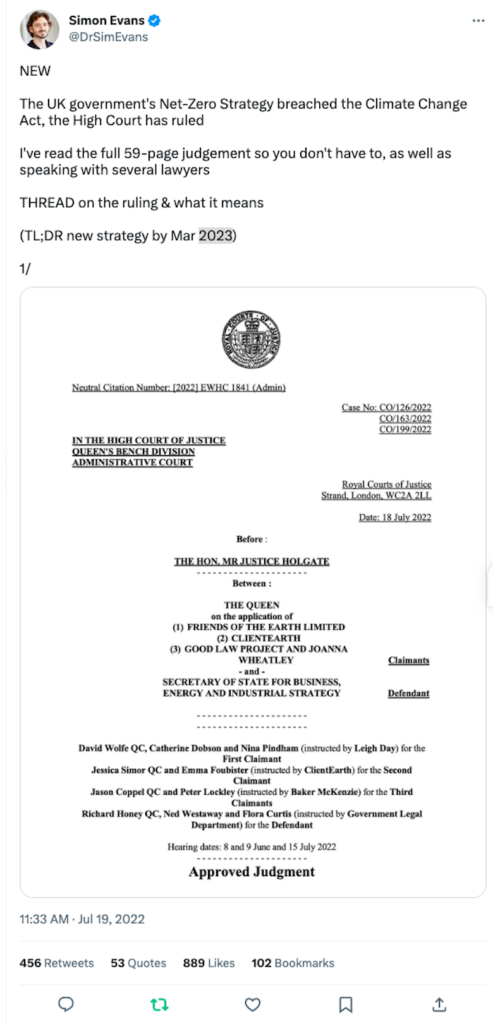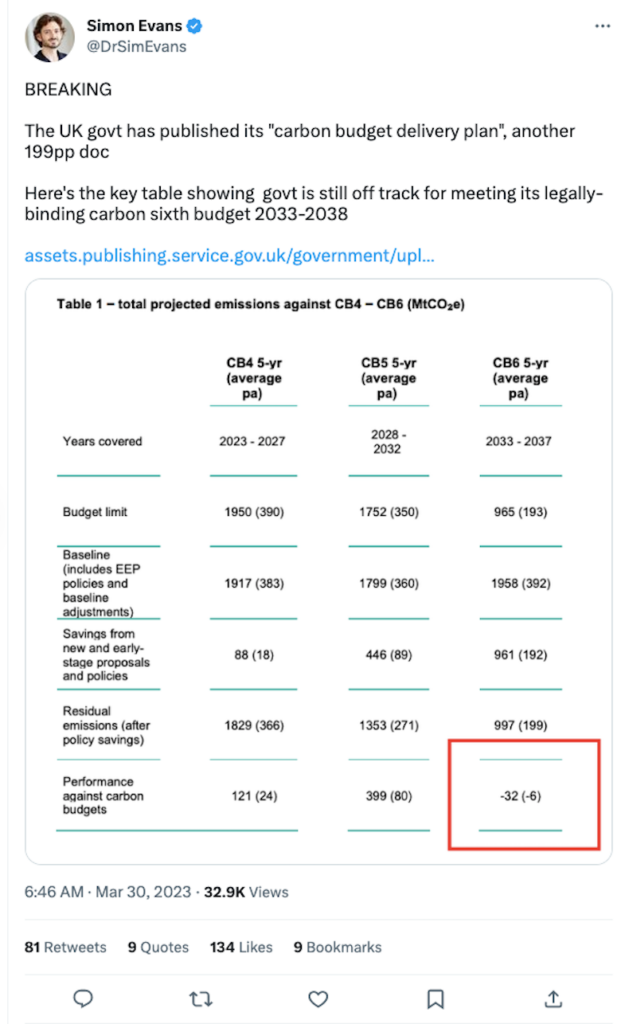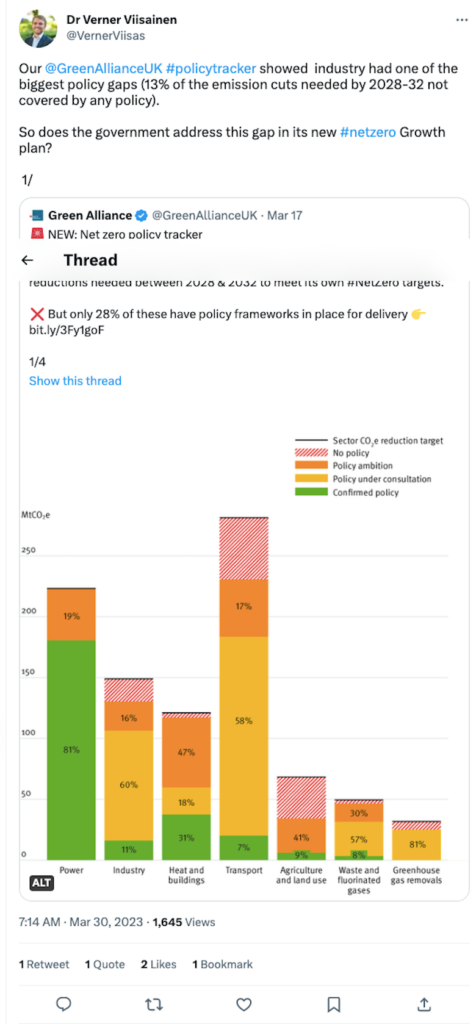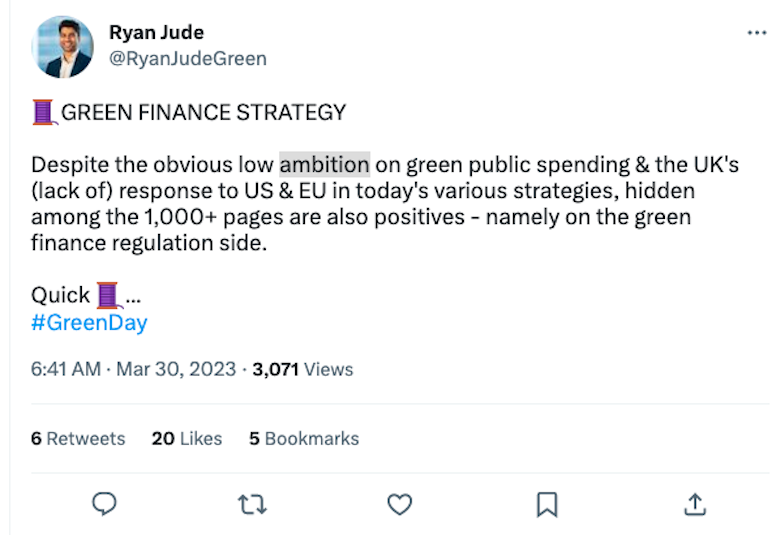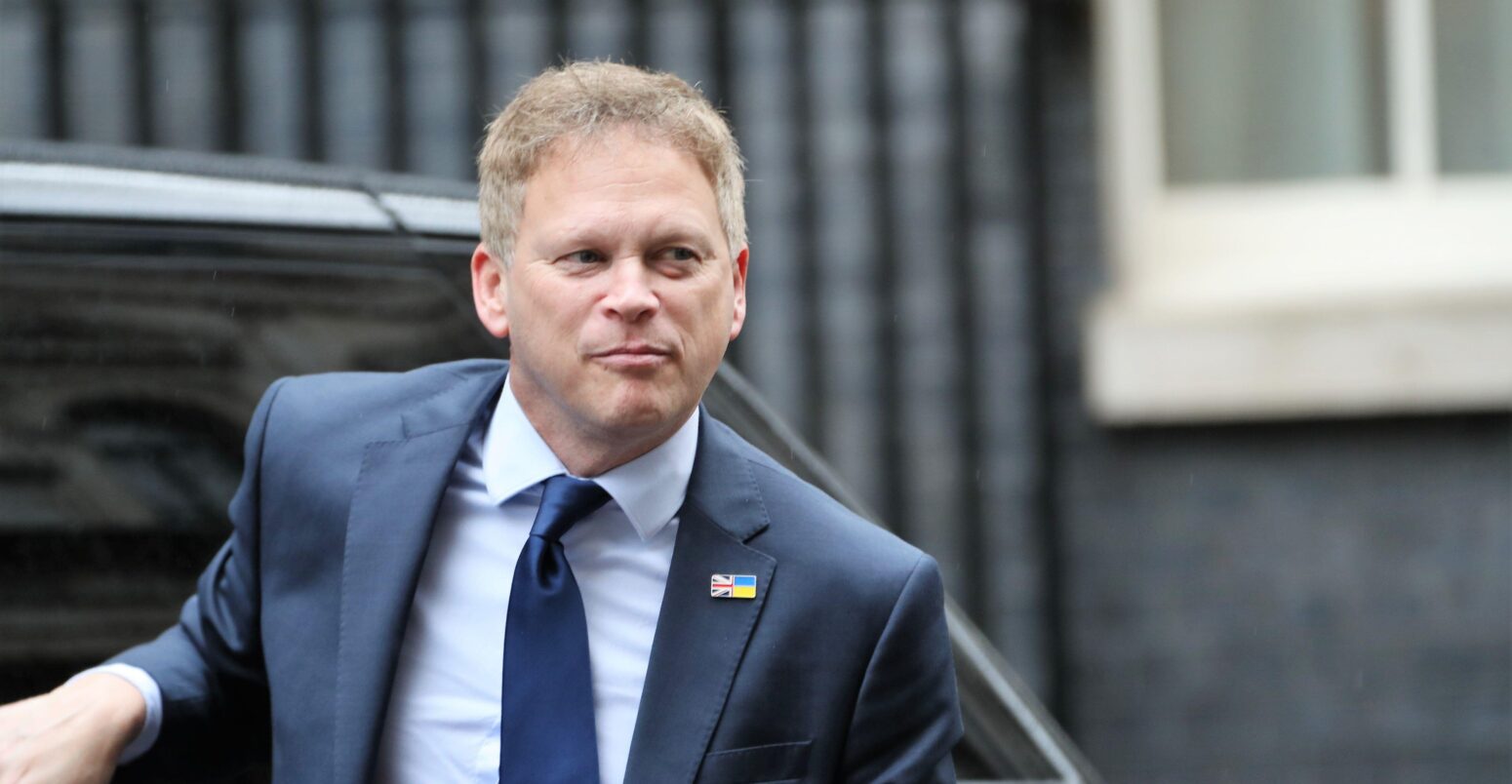
In-depth Q&A: The UK’s ‘green day’ avalanche of climate and energy announcements
Multiple Authors
03.31.23Multiple Authors
31.03.2023 | 3:26pmThe UK has published an avalanche of climate and energy documents in a chaotic policy move dubbed “green day” by some within government – and “not green day” by others.
By Carbon Brief’s count, the package includes 44 documents running to 2,840 pages.
Announcing the plans, prime minister Rishi Sunak said yesterday they would increase the UK’s energy security in light of Russia’s invasion of Ukraine and “maintain our world-leading action to reach net-zero”.
New measures to tackle UK emissions include the introduction of a zero-emission vehicle mandate, more funds for cutting pollution from industry and a new “green finance strategy”.
But, crucially, the package contains a “carbon budget delivery plan” showing that the UK is not on track to deliver on its international climate pledge for 2030 under the Paris Agreement.
Despite also showing the UK is off track against its legally-binding sixth carbon budget, this document, which formally responds to a 2022 High Court ruling finding the UK’s net-zero strategy unlawful, is likely to fend off the risk of immediate new legal challenge.
The tranche of documents also confirm that the UK will continue its policy of expanding fossil fuel production in the North Sea – despite mounting calls from UK academics and some Conservative politicians for the country to follow others in ending new oil and gas licences.
Rumours that the government planned to put on a “green day” to announce new climate measures first emerged earlier this month.
But – as details of the UK’s support for new fossil fuels were also trailed – Sunak’s team were forced to tell the Financial Times that the day was “not green day” and instead “energy security day”.
Below, Carbon Brief explains what is contained within the deluge of new documents, including what they mean for UK emissions, oil and gas production and key sectors of the economy.
- Why has the UK government published a new net-zero strategy?
- What is in the UK’s new climate and energy package?
- Could the new UK net-zero strategy face a fresh legal challenge?
- What does the new strategy mean for UK emissions?
- What does the new energy security strategy say about oil and gas?
- The UK’s new net-zero strategy sector by sector
Why has the UK government published a new net-zero strategy?
The government has published its “green day” package for a number of reasons.
These include the High Court ruling its climate strategy unlawful, big gaps in delivering its plans, the global energy crisis and the race for net-zero sparked by the US Inflation Reduction Act.
First and foremost, the government’s package is designed to comply with a July 2022 High Court ruling, which found its existing net-zero strategy was unlawful.
Specifically, the strategy should have explained how it added up to meeting the UK’s legally-binding carbon budgets – and those numbers should have been publicly available.
During the court case, which was brought by Friends of the Earth, ClientEarth and the Good Law Project, the government belatedly released figures on the overall impact of its existing net-zero strategy, showing it would not meet the sixth carbon budget for 2033-2037.
The court ruling said the government should have published similar numbers on a policy-by-policy basis, showing the impact of each of its plans in detail and exploring risks to delivery.
However, the ruling said these need not add up to 100% of the emissions cuts needed to meet carbon budgets in a decade, as further policies could be developed to close the gap.
The High Court gave a deadline of 31 March 2023 for the government to respond. As such, the government has submitted its response with one day to spare.
Second, the government is also responding to a slew of reports highlighting a yawning climate “delivery gap” – the gap between its ambition and delivery on the ground.
As of last June, the government only had “credible” policies for 39% of the emissions cuts needed in the sixth carbon budget, according to official advisers the Climate Change Committee (CCC).
A more recent assessment from thinktank Green Alliance found only 28% of emissions cuts needed for the fifth carbon budget were matched by firm policy.
Many others have reached similar conclusions. The National Infrastructure Commission (NIC) said the government was delivering in only eight out of 30 areas critical for UK climate plans.
The Skidmore review of net-zero – commissioned by ministers themselves – found the government was “not matching world-leading ambition with world-leading delivery”.
Third, the government is responding to Russia’s invasion of Ukraine. The ensuing global energy crisis has seen fossil fuel prices soar to record levels, turning the spotlight on energy security.
Writing in a foreword to one of the newly published documents, Grant Shapps, secretary of state for energy security and net-zero, highlights the need to “break[] with the fossil fuels that powered our last two centuries” in response to these events. He says:
“Putin’s brutal war in Ukraine and Britain’s continued reliance on imported oil and gas have pushed up energy prices to unprecedented levels over the past year…How do we secure the reliable, affordable energy that we need to power Britain’s future? How do we wean ourselves off the polluting sources of energy that are destroying our planet? And how do we make sure that families in this country can never be held hostage again by someone like Putin who uses energy as a tool of aggression?”
Finally, the government is responding to the race for net-zero sparked by the wave of low-carbon subsidies in President Biden’s Inflation Reduction Act (IRA). The EU has already issued its response to this challenge, with a “green deal industrial plan” launched earlier this month.
UK chancellor Jeremy Hunt has rejected the idea of “going toe-to-toe” with the US and EU and said a fuller response to their plans would not come until the autumn.
Nevertheless, this week’s package of measures was set out in a press release that promised to “drive multi billion pound investment in [a UK] energy revolution”.
Ahead of the launch, COP26 president Alok Sharma had said a “key test” would be whether the package “turbo-charg[ed] delivery of the government’s net-zero agenda and materially accelerates significant private sector money into green technologies and green jobs in the UK”.
Speaking in parliament after publication, Sharma told ministers:
“The reality is that the US, the EU and other nations are speeding up and attracting billions and billions, right now, of private sector investment. Why are we going to wait until the autumn to get a response to that? Don’t we need to speed up and have a response now, in terms of measures to deal with the Inflation Reduction Act and other measures from other nations?”
What is in the UK’s new climate and energy package?
The UK government has released an extremely lengthy package of climate and energy policy documents. By Carbon Brief’s count, it includes 44 documents running to 2,840 pages.
There are 15 policy documents, 10 relating to new consultations, 10 government responses to earlier consultations, five funding competitions, two external reviews and two pieces of research.
The centrepiece of the package is “Powering Up Britain”, which includes an overview of the government’s plans as well as the UK’s new energy security and net-zero strategies.
Other documents respond officially to the recent Skidmore net-zero review and the latest CCC progress report. There is a revised green finance strategy, a list of carbon capture and storage (CCS) projects that will receive government funding and a competition on floating offshore wind.
There are also new consultations on possible carbon border taxes and sustainable aviation fuels, as well as on minimum sales targets for clean cars and heating systems.
Crucially, there is also a “carbon budget delivery plan”, which responds to the High Court by explaining how the government intends to meet its legally-binding climate goals. (See: Could the new UK strategy face a fresh legal challenge?)
The package also contains a consultation on revised draft “national policy statements”, which govern how major energy infrastructure moves through the planning system.
A full list of these documents, including links to access each item, is shown in the table below.
Update 06/04/2023: A further six documents have been added to the table below, including investment roadmaps for offshore wind, heat pumps, hydrogen and CCS, as well as a report from the government’s “offshore wind champion”.
There was extensive briefing to the media ahead of publication, not all of which was accurate. Widespread coverage followed on the day of the launch, based on a 3,000-word release shared with the press – including Carbon Brief – under embargo.
(Most of this release was made up of supportive quotes from ministers and industry figures. Notably, while it does have a quote from the Nuclear Industry Association, many major trade groups are missing, including Energy UK, RenewableUK, the Renewable Energy Association, Solar Energy UK and the Carbon Capture and Storage Association.)
The full package of nearly 3,000 pages of new text was only released, drip by drip, over the course of Thursday morning after most media coverage had already been written.
Chris Stark, chief executive of the CCC, said on Twitter that his organisation had not been able to respond to the package because so little was shared in advance. He wrote:
“We had hoped to offer a reaction to today’s announcements, but we don’t feel we have sufficient material to do so this morning…This is government by press release – it doesn’t aid scrutiny.”
(Carbon Brief understands the CCC will make a full assessment of the new package as part of its next statutory progress report to parliament, due in June 2023.)
Could the new UK net-zero strategy face a fresh legal challenge?
Perhaps the most important document in the UK’s new climate policy package is a “carbon budget delivery plan”, listing the emissions impact of government policy over the next 15 years.
This document is designed to meet the demands of last year’s High Court ruling. It is also the government’s official report under section 14 of the Climate Change Act (“a report setting out proposals and policies for meeting the carbon budgets”).
Using the language of s.13 of the Act, the document says it contains policies and proposals that will “enable” the UK’s next three carbon budgets “to be met”.
Despite this language, table 1 of the document shows that the government’s quantified measures fall short of meeting the UK’s sixth carbon budget, covering 2033-2037.
The table shows that while carbon budgets four and five, covering 2023-2032, are due to be met easily, the plan only delivers 97% of the emissions cuts needed for 2033-2037.
This amounts to a shortfall of some 32m tonnes of carbon dioxide equivalent (MtCO2e) over the five-year sixth carbon budget period. (This figure is a marginal improvement over the 45MtCO2e deficit expected under the original 2021 net-zero strategy.)
Explaining the shortfall, the document notes that it is “extremely difficult” to forecast emissions savings over the course of more than a decade and, as such, the plan will need to evolve.
Furthermore, policies face varying delivery risks, discussed in the document. Some measures, it says, are “very likely…[to] out-perform expectations, with costs falling faster than we expect”.
Taking into account the “robust mechanisms in place to monitor, manage and mitigate our delivery risks”, the document concludes that it is sufficient to enable the carbon budgets to be met.
Similarly, the plan only delivers 92% of the emissions cuts needed to meet the UK’s international climate pledge, its 2030 nationally determined contribution to the Paris Agreement. Yet the document confidently asserts that this gap can be bridged:
“We are confident the delivery of emissions savings by unquantified policies detailed in this package will largely close this gap and the government will bring forward further measures to ensure that the UK will meet its international commitments if required.”
The delivery plan appears to fulfil the requirements of the High Court ruling, in so far as it details policy-by-policy savings, discusses delivery risks and considers options to make up any gaps.
Moreover, as noted above, the ruling did not require the government to produce a plan adding up to 100% of every budget. As such, the new document reduces the risk of further legal challenge.
Last year’s successful case claimed ministers had failed to follow due process, one of three grounds on which government decisions can be overturned.
If the courts agree that ministers have now followed due process, a fresh case would need to prove they acted “irrationally” in drawing up the new plan. This is a “very high bar to get over”, according to the Institute for Government and it is “rare for the courts to grant judicial review on this basis”.
Sahil Kher, a lawyer at the Good Law Practice involved in the successful legal challenge, said on Twitter that the Good Law Project team was “still assessing the documents to work out whether or not the government has actually done what the court required it to”.
Nevertheless, he welcomed the “huge amounts of detail” now in the public domain.
Another of the parties to last year’s case, Friends of the Earth, criticised the new plan for failing to meet the government’s goals, but stopped short of issuing another challenge, saying in a statement “if necessary, [our lawyers] are ready to take legal action again”.
What does the new strategy mean for UK emissions?
Among the huge number of new documents, a key item is the carbon budget delivery plan, which lists – and attempts to quantify – the impacts of all relevant government policies and proposals.
Table 5 of the delivery plan includes 191 quantified measures, listing expected emissions savings for each of the next three carbon budgets, covering the 15 years 2023-2037. As noted above, these measures fall short of the UK’s legally binding sixth carbon budget for 2033-2037.
Nevertheless, if these measures are delivered successfully, they would dramatically transform almost every aspect of the UK, including its emissions, economy and environment.
To give just a few examples, by 2035, the UK would be getting 99% of its electricity from low-carbon sources, between a quarter and a third of homes would have electric heat pumps, tens of thousands of hectares would have been afforested, half of all cars would be EVs and tens of millions of tonnes of CO2 would be getting sucked out of the atmosphere and stored every year.
Table 7 of the delivery plan lists these and all other deployment assumptions underpinning the estimates of emissions savings associated with government policy.
These figures are shown in the table below, where they are compared with the equivalent numbers from the original 2021 net-zero strategy.
In many areas, the new 2023 version is less ambitious than before, marked red. These areas include industrial resource efficiency, the near-term rollout of heat pumps and the share of zero-emissions cars in 2035. Some areas show more ambition (green).
| Area | Metric | Version | 2025 | 2030 | 2035 |
|---|---|---|---|---|---|
| Low-carbon power share | % | 2021 | 38-42 | 62-69 | 99 |
| % | 2023 | 37-41 | 67-71 | 99 | |
| Industry CCUS | MtCO2e | 2021 | 2 | 5 | 7 |
| MtCO2e | 2023 | 0 | 6 | 10 | |
| Clean hydrogen | TWh | 2021 | 10 | 40 | 80-140 |
| TWh | 2023 | 10 | 55-65 | 80-140 | |
| Oil rig electricity share | % | 2021 | 0 | 31 | 43 |
| % | 2023 | 0 | 25 | 29 | |
| Industrial resource efficiency | MtCO2e | 2021 | 1 | 10 | 11 |
| MtCO2e | 2023 | 1 | 6 | 7 | |
| Heat pumps installed | millions | 2021 | 1.1 | 4-4.3 | 6.9-11.3 |
| millions | 2023 | 0.9 | 3.6-3.8 | 7.1-11.5 | |
| Homes treated | million per year | 2021 | 0.5 | 1 | 0.5 |
| million per year | 2023 | 1.5 | 0.4 | 0 | |
| Commercial clean heat share | % | 2021 | 63 | 67 | 78-81 |
| % | 2023 | 61 | 65 | 73 | |
| Heat network supply | TWh | 2021 | 16 | 22 | 29 |
| TWh | 2023 | 17 | 27 | 35 | |
| Biomethane injection | TWh | 2021 | 8 | 12 | 12 |
| TWh | 2023 | 7 | 12 | 13 | |
| Peatland restoration area | Ha | 2021 | 7,000 | 10,290 | 10,290 |
| Ha | 2023 | 14,000 | 14,000 | 7,000 | |
| Afforestation area | Ha | 2021 | 30,000 | 40,000 | 50,000 |
| Ha | 2023 | 7,500 | 8,900 | 10,300 | |
| Energy crop planted | Ha | 2021 | 7,440 | 21,275 | 26,350 |
| Ha | 2023 | 0 | 9,600 | 15,000 | |
| Farmer low-carbon practice uptake | % | 2021 | 70 | 75 | 85 |
| % | 2023 | 70 | 75 | 85 | |
| HFC use relative to 2015 | % | 2021 | 31 | 21 | 15 |
| % | 2023 | 31 | 21 | 21 | |
| Carbon removal | MtCO2e | 2021 | 0 | 6 | 23 |
| MtCO2e | 2023 | 0 | 5.6 | 22.9 | |
| ZEV share of car fleet | % | 2021 | 6 | 24 | 53 |
| % | 2023 | 7 | 25 | 52 | |
| ZEV share of van fleet | % | 2021 | 2 | 14 | 40 |
| % | 2023 | 3 | 16 | 43 | |
| ZEV share of HGV fleet | % | 2021 | 0 | 9 | 37 |
| % | 2023 | 0.4 | 9 | 37 | |
| ZEV share of bus fleet | % | 2021 | 9 | 25 | 48 |
| % | 2023 | 14 | 35 | 61 | |
| Low-carbon fuel use (roads) | % | 2021 | 7 | 8 | 8 |
| % | 2023 | 9 | 10 | 11 | |
| Short journey cycle and walking share | % | 2021 | 46 | 50 | 55 |
| % | 2023 | 46 | 50 | 55 | |
| SAF share of aviation fuel | % | 2021 | 1 | 3 | 6 |
| % | 2023 | 4 | 10 | 15 | |
| Low-carbon fuel use (shipping) | % | 2021 | 0 | 1 | 28 |
| % | 2023 | 0 | 1 | 28 |
The UK’s greenhouse gas emissions overall, as well as in most individual sectors, would decline by 55% between 2021 and 2035, as shown in the figure below.
(Note that emissions from international aviation and shipping in 2021 were less than half of pre-Covid levels. The number of flights from UK airports doubled in 2022.)
The chart shows that the largest cuts – some 58MtCO2e, 53% – would come from domestic transport, primarily thanks to an accelerating shift to electric vehicles. This sector is currently the largest contributor to the UK’s emissions, accounting for 26% of the national total.
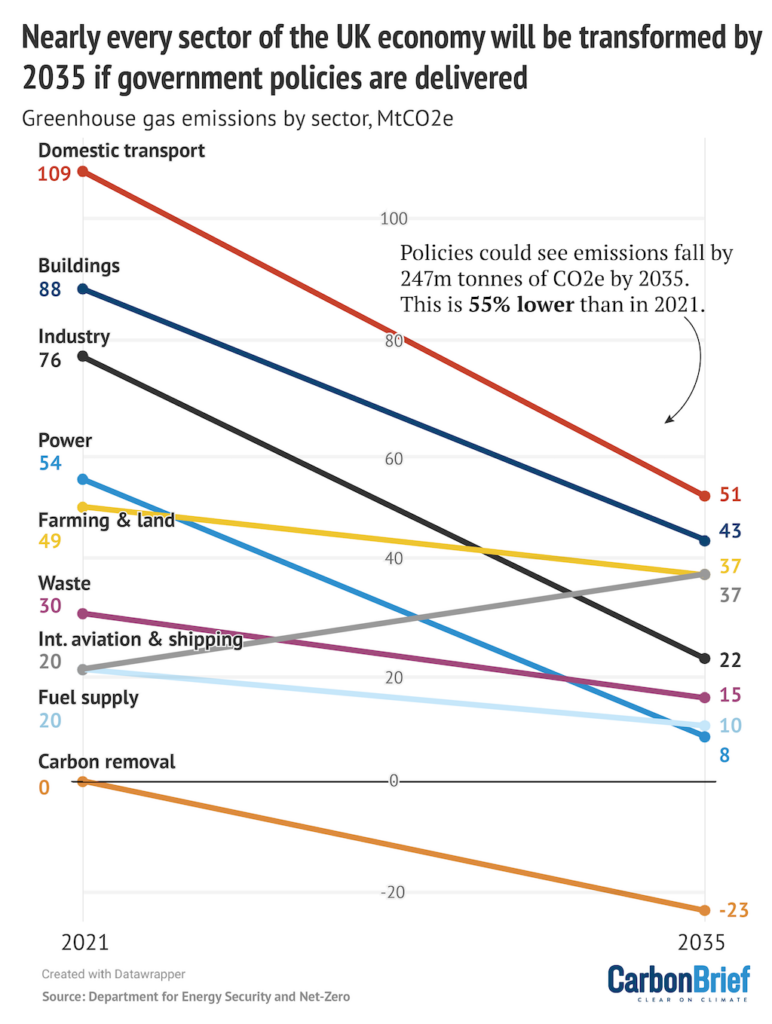
Industry would make the second-largest contribution to emissions cuts, reducing its output by 54MtCO2e (71%). Savings in the government’s plans would come from CCS and a shift away from fossil fuels towards electrification, hydrogen or biofuels.
Power generation, which has been responsible for the bulk of UK climate progress over the past decade, would take another 46MtCO2e (85%) off its emissions ledger. This would be delivered by a mixture of renewables, nuclear, CCS and hydrogen.
Next, buildings would cut emissions by 45MtCO2e (51%), largely via a shift to electric heat pumps and – potentially, in the government’s plans – a secondary contribution from hydrogen heat.
One striking contribution in the chart, some 23MtCO2e by 2035, would come from carbon removal via a mixture of bioenergy with carbon capture and storage (BECCS) or direct air capture.
Finally, other sectors, such as waste (15MtCO2e, 50%) and fuel supply (10MtCO2e, 50%), would make smaller, but still significant contributions to the UK’s overall progress by 2035.
Farming and land use would make the lowest contribution to UK’s emissions cuts, in percentage terms, reducing its output by just 24% (12MtCO2e).
The policy-by-policy numbers are only available in a PDF table covering 59 pages, making them hard to rank or categorise. Carbon Brief understands a spreadsheet version will be published soon.
Update 06/04/2023: The government has quietly added a spreadsheet version of the quantified policies in its delivery plan, to a large spreadsheet containing multiple tabs. Carbon Brief has made a stand-alone version of the table, which is free to access.
In table 6, the delivery plan lists another 143 “unquantified” policies and proposals, where the impact has not been calculated, in some cases because they are at an “early stage”.
Some of these unquantified policies are broad and do not have clear implications for UK emissions. For example, number 111, is “a national education nature park and award scheme”.
Others, such as number 72 on “additional proposals to raise product standards” to reduce energy use, have more obvious potential to contribute to meeting carbon budgets.
What does the new energy security strategy say about oil and gas?
Just days after the publication of a stark Intergovernmental Panel on Climate Change (IPCC) report, the government used its “green day” to reconfirm its commitment to expanding fossil fuel production in the UK.
The introduction of the Powering Up Britain plan says that the new Department for Energy Security and Net Zero’s mission is to replace fossil fuels with “cheaper, cleaner, domestic sources of energy”, with the caveat that it will respect “the vital role that UK oil and gas will play in the transition”.
Its Energy Security Plan says that the North Sea Transition Authority will retain its controversial core objective of “maximising” offshore oil and gas production in UK waters. (The North Sea Transition Authority is a company owned by the UK government. It was called the “Oil and Gas Authority” until March 2022.)
Under its policy of maximisation, the UK government opened a fresh licensing round for new oil and gas projects in October 2022. The Energy Security Plan notes that this round attracted 115 project bids. It adds:
“The authority is analysing the bids and is expected to award the first licences from the second quarter of this year.”
The Energy Security Plan makes no mention of the UK government’s “climate compatibility checkpoint”, a scheme devised in 2021 that was meant to ensure new licences would only be awarded if they were in line with the UK’s net-zero goal. (At the time, scientists and environmentalists questioned whether this could be possible.)
Also under its policy of maximising fossil fuel production, the UK government has a plan to “accelerate” the approval of new oil and gas projects (first announced in 2022).
The Energy Security Plan says this will “benefit the development of projects that are awarded new licences in 2023, as well as existing projects that already have a licence and are working their way through the regulatory process”.
It comes as the Times reports that the Rosebank oil and gas field was “expected to clear a key regulatory hurdle” on “green day”, but has not yet received final approval.
If approved, the Rosebank oil field will be one of the largest new offshore fossil fuel projects in recent years.
According to estimates, the field contains around 325m barrels of oil equivalent. When burnt, this would produce around 150m tonnes of CO2 equivalent – roughly the same produced each year by 90 of the world’s lowest-emitting countries.
(Rosebank is one of many planned oil and gas projects able to sidestep the government’s “climate compatibility checkpoint” because it already had a licence before the checkpoint was announced.)
And, earlier this month, the government announced the approval of the Talbot oil and gas field, which is estimated to contain 18m barrels of oil equivalent. Reacting to the news, Greenpeace UK’s climate campaigner Philip Evans said:
“The government is approving new oil fields the same week as its so-called ‘green day’ – no wonder ministers are trying to rebrand it. They’ll claim it’s in the name of energy security but, since the oil and gas belongs not to the UK but the company extracting it, and will be sold on the open market to the highest bidder, this couldn’t be further from the truth.”
The further fossil fuel expansion comes despite a letter to Rishi Sunak signed by more than 700 UK academics, including climate scientists Prof Tim Osborn and Prof Emily Shuckburgh, urging him to end the issuing of new oil and gas licences.
Philip Dunne, Conservative MP and chair of the Environmental Audit Committee, also recently warned that the government is risking its net-zero goals by failing to set an end date for awarding new oil and gas licences.
There is a large consensus across scientific studies that any new fossil fuel projects anywhere in the world are incompatible with the Paris Agreement’s aspiration to keep global warming to 1.5C above pre-industrial levels.
Many other countries similar to the UK, including France, Ireland and Denmark, have already pledged to end the issuing of new oil and gas licences in order to tackle climate change.
Dunne was also critical of the government for refusing the Environmental Audit Committee’s recommendation to commit the UK to ending gas flaring by 2025. Norway banned gas flaring in 1971, Dunne noted.
Ending the polluting practice of burning off excess gas was also a recommendation of a net-zero review by former energy minister Chris Skidmore. In its response to the review, also published on green day, the government confirms it will not be strengthening its target, saying:
“We already have ambitious plans to end routine flaring and venting.”
The Energy Security Plan also confirms that it will loosen rules to allow lower quality gas to be pumped into UK homes, another bid to boost production. This will not come into force until 2025.
The plan also says that the UK has the second-largest liquified natural gas (LNG) import capacity in Europe – and it has plans to go further.
It says the government is “working with industry to increase LNG import capacity”, with import terminals Grain, on the Isle of Grain, and South Hook, in Milford Haven in Pembrokeshire, Wales having permission to expand. The plan says:
“Once completed, the two projects will together increase the UK’s LNG import capacity to around 59bn cubic metres.”
The plan adds that “a small number of commercial firms are developing proposals to install floating LNG import terminals known as floating storage and regasification units (FSRUs)”.
It comes as the Guardian reports that Crown Estate Scotland has given permission for North Sea oil and gas companies to install floating windfarms to supply oil rigs with renewable power.
Ahead of green day, it was rumoured that the government would offer oil and gas companies relief on the windfall tax, first introduced in response to the firms’ sky-high profits during the energy crisis.
However, on the day, no such announcement arrived. David Whitehouse, chief executive officer of the trade body Offshore Energies UK, was left “disappointed” by this, saying:
“Our ask of the government is fair and reasonable: once prices return to normal the windfall tax should go.”
Carbon Brief analysis shows that the world’s largest oil and gas firms all made record-smashing profits in 2022.
The UK’s new net-zero strategy sector by sector
New net-zero strategy: Transport
Since 2016, transport has made up the largest share of UK emissions, some 26% of the national total. Cars and vans cause more than two-thirds of these emissions.
Grant Shapps says progress on transport emissions has been “much less spectacular” than power sector reductions, according to a report in the Times. Shapps – the transport secretary from 2019 to 2022 – says he takes “full responsibility” for this.
(Indeed, transport emissions had barely changed in three decades before the pandemic, while those from the power sector had dropped by nearly three-quarters.)
Some emissions reduction estimates have become less ambitious since the 2021 net-zero strategy. In the 2021 strategy, the average domestic transport emissions for the sixth carbon budget is estimated to be 29 to 43 MtCO2e per year. But in the new Carbon Budget Delivery Plan, this increases to an average of 51 MtCO2e each year.
The government’s previous net-zero strategy, published in October 2021, committed to introducing a zero emissions vehicle (ZEV) mandate to set specific sales targets for car manufacturers, leading up to the ban on the sale of new petrol and diesel cars and vans in 2030.
The independent review of the government’s net-zero plans recommended a “swift delivery” of this mandate. However, reports ahead of the new package had suggested it might be delayed.
Ending the sale of fossil fuel-powered cars by 2030 has been one of the most high-profile elements of the government’s net-zero plans. Moreover, it is the single-biggest measure in terms of the emissions cuts it is expected to deliver by 2035 – some 23MtCO2e or 9% of savings overall.
The ZEV mandate is expected to take effect from the start of next year, subject to a second consultation launched as part of the new climate policy package.
(The government also published its response to an earlier ZEV consultation. After reviewing 76 responses, this confirms that the banking and borrowing of ZEV allowances will be permitted. This is explained later in this section.)
The new consultation on the clean-car mandate lists the current proposed targets for the sale of zero-emissions vehicles.
Zero emissions cars should account for 22% of new cars sold by 2024, the proposed minimum targets set out. The proposals outline that this could rise to 80% by 2030 and 100% by 2035.
The minimum target for new zero-emissions vans is 19% of new sales by 2024, 70% by 2030 and 100% by 2035.
The framework on this mandate also includes a CO2 emissions standard for fossil fuel-powered cars and vans “to ensure they do not become less efficient and more polluting over time”.
The Financial Times reports that the new consultation proposes “loopholes” around the targets in the first few years of implementation.
Under the proposals, manufacturers that sell fewer petrol and diesel cars than the quota in the early years of the policy can either trade or hold onto excess credits. If manufacturers exceed the allowances for the sale of fossil fuel cars, they can buy these credits from other companies to compensate. Manufacturers that don’t meet the initial targets can also use allowances from past or future trading periods
This table shows the annual targets for new zero emissions car sales from 2024 to 2035.

The cost-benefit analysis attached to the ZEV consultation says the mandate would offer “high value for money” and would save households £35bn in fuel and maintenance costs.
Meanwhile, the government yesterday launched the £381m Local Electric Vehicle Infrastructure fund to more quickly install local charge points across England. An extra £15m has also been put towards the On-Street Residential Chargepoint Scheme.
The UK government released a new aviation plan in July last year. The “jet zero” strategy promises to “deliver net-zero aviation” by 2050, while allowing passengers to travel by air “guilt-free”.
The strategy prioritises largely undeveloped technologies, such as “sustainable aviation fuels” (SAFs) and zero-emissions flights.
In its new package of policies, the government repeated its previous commitment to introduce a mandate for at least 10% of UK jet fuel to be made from “sustainable sources” by 2030.
A consultation-stage cost-benefit analysis of the SAF mandate released yesterday notes that the use of SAFs is “currently limited” and production “relies on technology that is yet to be proven at scale”, which means high initial costs and uncertainty on investment returns.
This document says that a SAF blending mandate – requiring a mixture of biofuels and fossil fuels – would guarantee demand levels that will provide more certainty to investors.
The use of SAF would lead to an increase in ticket prices as airlines pass some of the operating cost increases to consumers, the report says, adding that the government plans to ensure that the SAF mandate “does not result in significant impacts on air fares”.
Replacing jet fuel with biofuel to sustain current passenger levels would require the UK to give up half of its agricultural land, a recent Royal Society report found.
The government says it will publish a Low Carbon Fuels strategy this year to “provide certainty” on the role of these fuels in the shipping sector.
The Carbon Budget Delivery Plan – also released yesterday – outlines a “principal risk” for transport that the rules and incentives the government is putting in place won’t be enough for the sector to reach net-zero in time to hit targets.
Risks to delivering these reductions, the plan says, are highest when relying on emerging technologies and markets such as ZEVs, flight technologies or low carbon fuels.
New net-zero strategy: Industry, CCS and hydrogen
Industry emissions made up around 17% of total UK GHG in 2021, excluding emissions from international aviation and shipping.
The net-zero plan says that progress in industrial resource efficiency and energy efficiency could save up to 12 MtCO2e each year, excluding potential further emissions drops in the iron and steel sector.
The government announced a £185m boost for the Industrial Energy Transformation Fund which aims to help emitting industries cut energy bills and carbon emissions.
The Carbon Budget Delivery Plan says the UK’s decarbonisation ambitions for industry are “stretching to achieve”. Among the additional measures being examined are further action on efficiency, fuel switching and carbon capture, utilisation and storage (CCUS).
A lot of industry decarbonisation efforts are centred on major industrial “clusters” – areas of large industry concentration in the UK where just over half of the sector’s emissions stem from.
The carbon budget plan adds that the sector’s pathway to cutting emissions is “heavily reliant on new and emerging technologies, alongside significant investments”.
Yesterday, the government announced that eight projects have been chosen to proceed to the next stage of CCUS support negotiations.
These projects represent a range of innovative technologies, the government says, with the potential to speed up decarbonisation, provide economic benefits and “kick start the hydrogen economy”.
This is the UK’s first large-scale effort on CCS, a technology that is still developing and is currently mostly restricted to pilot projects.
The selected options going through to the next stage fall under two overarching projects: the East Coast cluster and the HyNet cluster.
East Coast cluster:
- Net Zero Teesside Power
- bpH2Teesside
- Teesside Hydrogen CO2 Capture
HyNet cluster:
- Hanson Padeswood Cement Works Carbon Capture and Storage Project
- Viridor Runcorn Industrial CCS
- Protos Energy Recovery Facility
- Buxton Lime Net Zero
- HyNet Hydrogen Production Plant 1 (HPP1)
A “notable omission” from the shortlist is energy firm Drax’s proposed bioenergy and carbon capture and storage project, says BusinessGreen.
Yesterday’s announcement “cast doubt over its £2bn carbon capture project and plunged the company’s share price into turmoil”, reports the Guardian,
The paper says that the company “suffered one of the biggest falls on the FTSE 250 as shares tumbled 12%” yesterday morning.
In a statement, Drax tells investors that it will enter formal bilateral talks with the government “immediately, to move the project forward”.
The government released a guidance document around further development of CCUS, setting out objectives and eligibility terms for the way in which this will work.
Fifteen hydrogen projects also progressed to the next application round for funding under the £240m Net Zero Hydrogen Fund, the government announced.
A consultation on business models for hydrogen production and industrial carbon capture business models was released yesterday.
This says that both hydrogen and CCUS play a “key role” in the net-zero strategy. The consultation sets out a number of proposals on issues, including the publication of information about contracts and projects as well as the eligibility terms of hydrogen and carbon capture projects. It closes on 10 May this year.
The aim to capture 20-30m tonnes of carbon dioxide (MtCO2) per year by 2030 was first announced in the government’s 2021 net-zero strategy
In the spring budget 2023 announced earlier this month, Jeremy Hunt allocated “up to £20bn” to support the deployment of carbon capture and storage, with up to £1bn set aside each year.
However, none of this money is reflected in the formal budget policy costings.
Yesterday, the government launched a consultation on addressing the carbon leakage risk to support decarbonisation. The Treasury and the Department for Energy Security and Net Zero are seeking views to develop policy proposals to prevent potential carbon leakage risks in future. This consultation closes on 22 June this year.
Potential measures being looked at under this consultation include a carbon border adjustment mechanism (CBAM). The government confirmed last year that it would consult on this topic following a committee report on “Greening imports: a UK carbon border approach”.
Cam Witten, a senior policy adviser at thinktank Green Alliance, notes on Twitter that there is an emphasis on international, collaborative solutions to carbon leakage. He adds that the UK “will need to move swiftly” on this, partly because the EU’s carbon border mechanism is due to operate from October this year.
New net-zero strategy: Electricity
The UK’s electricity sector has made the fastest progress in cutting its emissions over the past decade thanks to a rapid shift away from coal. It now makes up just 13% of UK emissions.
Nevertheless, further progress is central to wider progress across the economy, as other sectors increasingly shift to low-carbon power to fuel their needs, instead of fossil fuels.
The government has previously committed to a “fully decarbonised” power system by 2035, but the CCC has warned that reaching this goal needs “urgent reform”.
The new energy security strategy reiterates a target to also have “among the cheapest wholesale electricity prices in Europe” by 2035. It says “low-cost renewables will be central to our goal”.
Nuclear will be a “vital component”, CCS is “essential” and hydrogen “a critical component”. (See: New net-zero strategy: Industry, CCS and hydrogen.)
The strategy reiterates the pledges from the spring budget to set up “Great British Nuclear”, which will begin recruiting staff “shortly” and will be based “in or around” Greater Manchester.
The body will run a competition for small modular reactor (SMR) designs, starting with “market engagement” in April 2023 and a selection process in summer. It will have “an ambition to assess and decide on the leading technologies by autumn”. In line with the Skidmore review recommendations, the government will publish a nuclear “roadmap” later this year.
Thursday’s package contains little in the way of new policy for renewables. However, it does launch a competition for up to £160m to support floating offshore wind manufacturing.
It also pledges a joint government-industry solar taskforce and a solar “roadmap setting out a clear step by step deployment trajectory to achieve 70GW of solar by 2035”.
In addition to these technology-specific measures, the government says an “efficient planning system” will be needed to actually deliver the infrastructure for zero-carbon power.
It has published revised draft “national policy statements” (NPSs) for consultation, saying that these “reflect the importance of energy security and net-zero with clear, strong statements of national need for new energy infrastructure which can help expedite planning”.
(The energy NPSs were first published in 2011. Draft revisions were published for consultation in late 2021, with those versions criticised by MPs for falling short of the urgency required.)
The energy security strategy says:
“The revised draft Renewables NPS introduces the concept of ‘critical national priority’ for offshore wind and supporting transmission infrastructure, and the revised draft electricity Networks NPS is strengthened by reference to strategic network plans that ensure our connecting infrastructure is developed in a joined-up way to reduce impacts.”
Notably, despite pledges to end the de-facto ban on onshore wind in England, the technology remains outside the nationally significant infrastructure planning regime covered by the NPSs. This means it will continue to be treated less favourably than all other energy technologies.
A consultation launched last December promised to “deliver a more localist approach” to onshore wind planning rules and “to support the repowering of onshore wind”.
The government will respond to this consultation by “spring 2023”. It will also launch a consultation on “local partnerships for onshore wind in England”.
The new strategy says the government is also developing a revised nuclear NPS and will consult later this year on siting new nuclear projects.
The strategy also says the government “will…not” change agricultural land classifications “in ways that might constrain solar deployment”. Last year, ministers were reportedly planning changes that would have amounted to an effective ban on new solar farms in England.
It says the government will publish “action plans this year” on speeding up the time it takes to expand and connect to electricity grids. It has also launched a consultation on “community benefits” – usually financial incentives – for electricity transmission upgrades.
The government has rejected the recommendation that energy regulator Ofgem be given a clear net-zero objective as part of its statutory remit.
Despite reportedly suggesting the UK might move to “decouple” electricity prices from gas, “green day” makes no mention of such plans. Instead, it says the government will publish a second consultation on its “review of electricity market arrangements” (REMA) in “autumn 2023”.
This could result in decoupling, but is expected to take several years. The energy security strategy pledges to “take decisions on shorter-term reforms more quickly where it is viable to do so”.
New net-zero strategy: Heat and buildings
Heat and buildings are the second-largest contributor to the UK’s greenhouse gas emissions after transport, making up some 21% of the national total.
As with transport, there has been little progress in cutting emissions from buildings over recent decades. Some 85% of UK homes use gas boilers for their heating and, in doing so, they enjoy an effective subsidy of £100 per tonne of resulting CO2 emissions.
The “green day” plans confirm that the government will move to “rebalance” the cost of gas bills relative to electricity, in line with the recommendations of the Skidmore review. It says:
“Rebalancing will generate the clear short-term price signal necessary to shift both households and businesses to lower-carbon, more energy efficient technologies like heat pumps. This is vital to meet government’s existing decarbonisation commitments.”
The review had said the government should outline its approach to rebalancing during 2023/2024 and start to implement changes by the end of 2024. The government accepts these timelines.
Energy security secretary Grant Shapps favours shifting the cost of government climate and social policies from electricity bills onto gas, according to Bloomberg. It reports:
“Changing the system would require levies to move ‘onto the gas side of things because it would automatically make the economics of an electric-driven economy better,’ Shapps said at a briefing on his energy security plan.”
However, this is not the only option to rebalance bills. Indeed, shifting levies into general taxation would be less regressive than paying for them via gas bills.
The carbon budget delivery plan says the government will “explore” using the UK emissions trading system (UKETS) to rebalance gas and electricity prices “when the current high gas prices fall”.
(The EU and some of its member states have started to put a price on emissions from gas used for heating. Electricity is already subject to carbon pricing under the EUETS and UKETS.)
Another key initiative outlined in the “green day” documents is a consultation on a clean heat mandate, which would work in a similar way to the ZEV mandate for cars and vans.
This “clean heat market mechanism” (CHMM) would contribute towards the government’s existing “ambition” to phase out all new and replacement gas boilers “by 2035 at the latest”.
(The government has rejected the Skidmore review recommendation to bring this date forward to 2033. The Times quotes Skidmore saying this refusal “will cost people money”.)
The CHMM would specify minimum heat pump sales for manufacturers, defined as a share of their sales of gas boilers, starting with the equivalent of 60,000 installations in existing homes in 2024.
(UK heat pumps sales, overall, including newbuild properties, reached around 60,000 last year, after growing 40% since 2021.)
The CHMM targets for heat pumps in existing homes would then rise to 90,000 in 2025, 150,000 in 2026, 250,000 in 2027 and 400,000 in 2028. (The government’s existing target is for 600,000 heat pumps to be installed per year from 2028, but this includes newbuild properties.)
The consultation says that “hydrogen-ready” gas boilers will not count towards the CHMM targets and will instead “be considered relevant fossil fuel boiler sales”.
In addition to the clean-heat mandate, the government has extended its “boiler upgrade scheme” subsidies for heat-pump installations for a further three years to 2028.
It has also launched a £30m “heat-pump investment accelerator” to “incentivise the UK manufacture of heat pumps to improve supply of low-carbon heat”.
Guidance on this funding competition says the UK’s carbon budgets “require” the heat-pump market to grow to “up to 1.9m” per year by 2035. This would amount to all new heating systems being heat pumps and would preclude the use of hydrogen boilers.
However, despite the weight of evidence in favour of heat pumps, the carbon budget delivery plan maintains the government’s position that it may support a “major” role for hydrogen heat.
Notably, heat pumps would remain the dominant technology even in this scenario, with the government outlining deployment of 7.1-11.5m heat pumps by 2035 and 0-4m hydrogen boilers.
The Energy Company Obligation (ECO+) scheme has been rebranded as the Great British Insulation Scheme, the net-zero report confirms. This aims to insulate homes and make them more energy efficient.
The Powering Up Britain document says that around 300,000 of the country’s least-efficient homes could save £300-£400 per year by March 2026 under the scheme.
The government published a response to the consultation around this scheme.
The government also says it will publish a summary of the responses to a consultation from two years ago on landlord minimum efficiency standards.
It also plans to launch a new consultation by the end of this year focused on improving the energy efficiency of owner-occupied homes.
The newly released documents also refer to the recently announced Energy Efficiency Taskforce which will advise on how to cut UK energy demand from buildings and industry by 15% on 2021 levels by 2030.
The government further says it will consult on the technical specifications for the Future Homes Standard and Future Buildings Standard this year with the aim for legislation to take effect in 2025.
Climate thinktank E3G has noted that there is a £2.1bn gap between the funding pledged and actually allocated to make buildings more energy efficient and to decarbonise the heat sector.
Electrify Heat, a campaign group managed by E3G and environmental public affairs consultants Culmer Raphael, says heat pumps were the “big winner” yesterday with measures such as a three-year extension for the “boiler upgrade scheme”.
New net-zero strategy: Farming and land use
Agriculture and other land use emissions made up around 11% of the UK’s overall greenhouse gases in 2021.
A number of documents in yesterday’s net-zero package relate to land use and nature-based solutions, with some mentioning agriculture and the role it plays in reducing emissions and protecting biodiversity.
The new reports mostly focused on green finance, nature markets and a 2030 framework for nature and climate action.
This “sends a signal that the opportunities from investing in our farmland, forestry, peatlands and marine areas are great and offer long-term rewards for people and nature”, according to a statement from environment secretary Thérèse Coffey.
(Some key farming and environment-related reports were released earlier this year – including the Environmental Improvement Plan and the Environmental Land Management Update.)
The net-zero plan says that the independent review of the UK’s previous net-zero plans shows the economic opportunities of “decarbonising land-use sectors and sustainable managing natural resources and broader ecosystems”.
The government’s updated Green Finance Strategy released yesterday says the journey towards net-zero is “not only an environmental imperative, but a growth opportunity”. This report says that the government will publish a roadmap for nature-positive investment by next year.
A recent Green Finance Institute report commissioned by the Department for Environment, Food & Rural Affairs said that the government should set out explicit and simple environmental priorities for the farming sector in order to better access private investment in reducing emissions and nature loss.
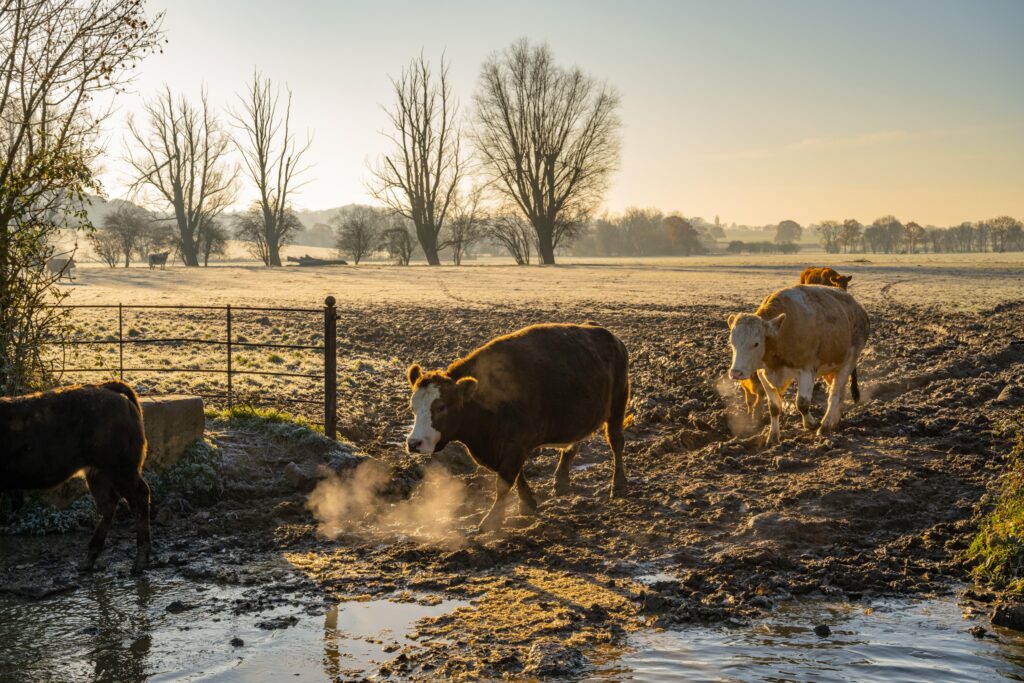
The Carbon Budget Delivery Plan says that the yearly area of afforestation – trees planted in new areas – in the UK will be 13,300 hectares (Ha) in 2021 and reduce to 10,300 in 2035.
Although no such figures are listed in the new net-zero growth strategy, the government’s 2021 strategy lists significantly higher figures for yearly area of afforestation – showing it would reach 50,000Ha per year by 2035. Carbon Brief has queried this with the Department for Energy Security and Net Zero.
Also released yesterday, a nature markets framework to scale up private investment in nature recovery and sustainable farming sets out ways in which these markets can “operate transparently and deliver benefits for nature, the economy and local communities”.
Nature markets in the UK are currently small and at the early stages of development but the framework says they are expected to grow “rapidly”. (Read Carbon Brief’s Q&A on nature-based solutions and climate change.)
The framework lists principles by which the market should operate and rules for how land and coast managers can access these markets.
Another new report, the 2030 Strategic Framework for International Climate and Nature Action, is clear that climate change and nature loss are “interlinked”, saying:
“In many cases they share common causes and the same solutions. They must be tackled together, as complex, whole economy, multi-generational issues that require long-term commitment and international collaboration.”
This document sets out some key challenges and opportunities for the UK in tackling climate change and biodiversity loss.
In terms of farming announcements, the government committed to developing a unified approach to measure farmland emissions.
The Soil Association head of farming policy Gareth Morgan says it is “shocking” that the announcement “brings zero in the way of new policies to transform 70% of the UK – its farmland”. He adds in a statement:
“This is even more concerning the day after the Climate Change Committee revealed the failure to prepare the UK for climate change.”
The government has “started development” of the Natural England Peatland Restoration Plan which is set to provide a pathway to restore peatlands by 2050, the net-zero report says. This is due to be published next year.
It will also launch a £6.6m lowland peat research and development programme and look at ways to grow ambition for lowland peatlands.
The government will publish a number of other reports including a summary of responses to the call for evidence on methane suppressing livestock feed.
It also plans to publish a new biomass strategy this year, a report that was due to be published in 2022.
A land use framework for England is still on the horizon for this year. A “Net Zero and Nature Workforce Action Plan” is due to be published in the first half of next year and will combine different sectoral assessments, the net-zero plan says.
New net-zero strategy: Green growth and finance
Among the new documents is a revised green finance strategy for 2023.
The strategy was co-developed by the Treasury, the Department for Energy Security and Net Zero and the Department for Environment, Food and Rural Affairs (Defra). It comes after the UK published its first green finance strategy in 2019.
It is designed to “seize [the] opportunity [of the net-zero transition], mitigate [climate] risks and ensure the necessary finance flows to our net zero, energy security and environmental industries”, according to a foreword by Hunt, Shapps and Coffey.
The strategy “sets out how the UK government will pursue its ambition to become the world’s first net zero-aligned financial centre – equipping the market with the information and tools necessary to drive the transition”, according to the ministers.
It also “sets out how the UK government is working with a range of public financing bodies to commercialise and finance the green technologies needed for the transition” and “how the UK will use our leadership and the expertise of our financial sector to accelerate the shift to a green global financial system and catalyse green financing globally, including in emerging and developing markets”.
On Twitter, Sam Alvis, head of economy at the thinktank Green Alliance, sums the strategy up by saying the “can has had an almighty kick”.
He says that, on public finance, the strategy “acknowledges” the importance but merely “restate[s] cash from other papers [that] reannounce cash from before”.
Also on Twitter, Ryan Jude, Labour councillor and deputy cabinet member for climate and biodiversity, says that “despite the obvious low ambition on green public spending”, there are some “hidden positives” in the strategy.
He notes that there have been “positive updates” on developing a UK Green Taxonomy, a system that will aim to determine whether an investment is sustainable or not.
The strategy says the government “will deliver a UK Green Taxonomy” and that “this will support the quality of standards, labels and disclosures used in the industry for green finance activity”. It adds that the government plans to hold a consultation on the taxonomy in autumn of this year.
Jude says this step will provide “crucial clarity” for industries.
The strategy also says the government will align itself with international standards and develop a “science-based global baseline on taxonomies”. This step has the “potential to have a huge impact on international climate investments, particularly for emerging and developing economies”, according to Jude.
James Fortherby, a policy officer at Aldersgate Group – a sustainable business group, says on Twitter that the strategy is “jam-packed” with plans for new consultations, assessments and reviews.
He notes that the strategy includes a commitment from the government to hold a consultation on broadening rules to force private companies to disclose their net-zero transition plans.
(At present, the Financial Conduct Authority only requires listed companies and large asset owners to disclose transition plans. But it is worth noting that legislation enforcing this was dropped from a financial services bill in 2022, according to the Financial Times. It is not clear whether there will be a legal basis going forward.)
The strategy also says the UK government will launch a call for evidence on how companies can report on their “scope 3 emissions”. (Scope 3 emissions are those that are not directly caused by a business, but are part of its supply chain. For example, the emissions caused by burning gas would be considered scope 3 emissions to the company that extracted it. They typically account for 80-95% of an organisation’s total footprint, according to the strategy.)
Fortherby describes this step forward on scope 3 emissions as a “welcome surprise”.
-
In-depth Q&A: The UK’s ‘green day’ avalanche of climate and energy announcements


